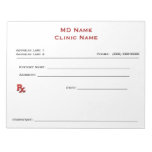However, there’s more to it than that, and coders need to understand the nuances of reporting these visits if they want to avoid payer scrutiny, says Raemarie Jimenez, vice president, member and certification development at AAPC, an organization representing professional coders, billers, auditors, compliance professionals, documentation specialists and practice managers. “It’s one thing to go through the steps for good clinical care,” she says. “It’s another thing as to when it’s a billable service.”
Jimenez provides the following five best practices to help coders report preoperative visits correctly and avoid costly denials.
1. Recognize That Not Every Patient Requires Pre-Op Clearance
The purpose of a preoperative visit is to evaluate a patient’s complicating health condition to determine whether he or she can withstand surgery. Healthy patients don’t generally require a preoperative visit, and providing one may not be medically necessary. Surgeons may evaluate healthy patients to determine whether surgery is necessary; however, they don’t typically need to send these patients to a primary care physician, internist, or specialist to clear them for the surgery.
2. Know Who Can Perform Pre-Op Clearance
Specialists and internal medicine physicians are among those who most frequently perform preoperative clearance because they’re the ones typically managing the conditions that could affect surgery.
Surgeons may try to bill these visits without realizing that any preoperative evaluations they perform after the decision to perform surgery is made are included in the global surgical package. The global package also includes the visit during which the surgeon performs a preoperative history and physical (H&P). Per CPT guidelines revised in 2016, surgeons can’t bill the H&P separately using modifier -24.
In addition, the global package includes any related subsequent visits that occur prior to the surgery but after the decision for surgery is made. For example, a patient decides to have surgery but then delays surgery for a few months due to scheduling conflicts. The surgeon brings the patient back into the office for an evaluation the day before surgery.
This additional visit is not separately billable, says Jimenez. “The payer says, ‘Ok, we’re paying you for the entire package. Don’t unbundle services we are already paying for,’” she adds. If it’s unrelated to the surgery, it’s separately reportable using a diagnosis that’s also unrelated to the surgery.
3. Report At Least Three Different ICD-10-CM Diagnosis Codes
Visits for preoperative clearance require ICD-10-CM codes that denote the following information:
- Intent for pre-operative clearance (Z01.81x)
- Diagnosis for which clearance is requested
- Diagnosis for which the patient is undergoing surgery
Note that ICD-10-CM code Z01.81x requires additional specificity regarding the purpose of the preoperative exam (i.e., for cardiovascular exam, respiratory exam, laboratory exam, other preprocedural exam, allergy testing, blood typing, or antibody response exam).
Consider this example: A surgeon sends a patient with acute exacerbation of chronic obstructive pulmonary disease (COPD) to a pulmonologist for preoperative clearance so he or she can undergo knee surgery to alleviate right knee pain due to osteoarthritis. The pulmonologist should report an E/M code for the office visit as well as the following three diagnosis codes (in this order):
- Z01.811 (Encounter for preprocedural respiratory examination)
- J44.1 (COPD with acute exacerbation)
- M17.11 (Unilateral primary osteoarthritis of the right knee)
The sequence of the codes is important because the Z code indicates to payers that the purpose of the visit is for preoperative clearance, says Jimenez. Note that physicians could report more than one Z code depending on the number of systems they evaluate. When reporting multiple Z codes, they should also remember to report the additional diagnoses for which the examinations and clearance are required.
For example, an internist might examine the patient’s COPD and cardiac arrhythmia for preoperative clearance. In this case, report Z01.811 as well as Z01.810 (encounter for preprocedural cardiovascular exam) as well as the ICD-10-CM diagnosis codes that denote the COPD and arrhythmia. This is in addition to the reason for surgery (reported last in the sequence).
4. Ensure That Documentation Supports Medical Necessity
To justify medical necessity, documentation should include the following details:
- Any condition(s) the physician evaluates to clear the patient for the anticipated surgery
- Whether the patient is cleared for surgery and why
- Reason(s) why the patient isn’t cleared for surgery and any course of action that’s necessary to enable clearance (e.g., prescribe a course of antibiotics to treat congestion)
5. Distinguish Between ‘Clearance’ and ‘Decision for Surgery’
Unlike visits for preoperative clearance, surgeons can bill for visits to discuss the decision for surgery. Report an E/M code with modifier -57 (decision for surgery) when the encounter is the day before or the day of a major surgery. When the encounter occurs prior to the day before surgery, modifier -57 is not required.






















